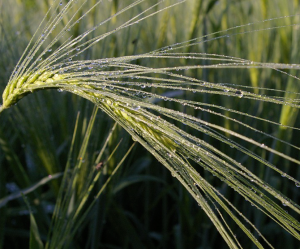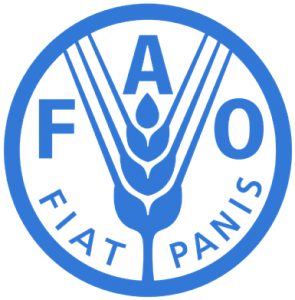 08 Aug 2022
08 Aug 2022
Food security is a very unsettling matter due to the multiple threats that compromise its stability and sustainability around the world.
Introduction
Global food trade has allowed countries to buffer against domestic food production shortfalls and gain access to larger markets. However, trade engagement has generated greater shock exposure in economies as well as increasing their liability towards the extraction of food resources.

Almost a quarter of the food produced for human consumption is traded globally (D’Odorico P., Carr J.A., Laio F., Ridolfi L., et al.2014), and while global food supply has increased since the 1960’s, food self-sufficiency has not seen remarkable changes (Porkka M., Kummu M., Siebert S., et al. 2013). Around 720 to 811 million people are still considered undernourished despite enough food for human consumption being produced and traded globally (Suweis S., Carr J. A., Maritan, et al.2015).
Since 2014, FAO has seen a rise of 9.5 percent in global undernourishment levels between 2014 and 2019. The global COVID-19 pandemic added an extra 161 million people to the undernourishment ranks in 2020 (FAO, IFAD, UNICEF, WFP and WHO. 2021). Such statistics point to trade as central in solving hunger while also accelerating the achievement of the United Nations (UN) Sustainable Development Goal on ending hunger (FAO, IFAD, UNICEF, WFP and WHO. 2021). Policymakers have suggested a variety of responses ranging from calls to convert more wildlands to arable land, intensifying crop production, or redistributing what is produced through a shift in trading policies. Aiming to redirect exports or emphasize isolation from global markets (Brown M. E., Carr E. R., et al. (2017).

Network analysis of global food trade shows that the world has become more interconnected over the last thirty years (Sartori M. & Schiavo S., et al 2015). Research shows that trade intensification in itself does not erode food system resilience but that resilience is dependent on network structure (Tu C., Suweis S. & D’Odorico P. 2019). In a similar fashion, global wheat and rice commodity networks have evolved towards becoming less vulnerable over time. As countries have established greater interconnectivity resulting in more trading partners (Fair K. R., Bauch C. T., et al 2017).Nonetheless, the resilience of global food systems sees itself undermined when countries are either super exporters or almost entirely trade dependent importers (Tu C., Suweis S. & D’Odorico P. 2019).

Given the reliance of a majority of countries to meet demand for staples and domestic shortfalls through trade (Puma M. J., Bose S.,et al. 2015), the global food system is vulnerable to both self-propagating risks (i.e. trade restrictions) and global systemic risk such as climate change (Cottrell R. S., Nash K. L., Halpern B. S., et al. 2019).
Therefore, as sensitivity to perturbations has increased, so has food insecurity. Developing countries absorb more of the trade shock as interconnectivity increases and these uneven impacts of trade have great implications in regards to nourishment and hunger.Putting an even greater load on countries that are already struggling to keep consistent food supplies.
A surge in global food insecurity during the recent pandemic due to grain exports restrictions (Osendarp S., et al. 2021) aggravated by the war between Russia and Ukraine, have sparked an urgent need to assess and address vulnerability within global food and trade networks.

Study
A study carried out by researchers at the University of California, Davis, in conjunction with the International Food Policy Research aimed to analyze how the global grain network influences country-level nourishment, while controlling for per capita land and food production
Results and discussion
Focus on local feed systems
This study calls for a greater emphasis on regional and localised food systems, because well-functioning local food systems more effectively counter shortfalls and disruptions in the larger globalised food system.
Co-author of the study Catherine Brinkley said global grain supplies were now at the forefront of global trade concerns: Food grains – wheat, maize and rice – account for over 50% of human caloric consumption and underpin global food security.
Most influential countries
Researchers used international wheat data to reconstruct the global trade network and identify the most influential countries. They found that countries most central to the global grain trade account for more than half of all wheat exports globally by volume:
This makes the global wheat value chain vulnerable, as a shock to one of these countries is likely to propagate across the globe.
That is the curse of operating with a food system where components, big or small, are all connected, added Brinkley
Greater farming area does not always translate into reduced hunger levels
Researchers found that a greater availability of agricultural land does not necessarily translate into higher levels of local and national nourishment within a country.
One might expect that having lots of farmland would help buffer against hunger. Yet, agriculturally rich areas of the world are often literal battlegrounds for control over resources. Said Brinkley.

Prioritizing economic growth over food security
Food resources are often plugged into the vast globalised food chain with little to no positive impact on communities where the chain started. According to researchers, many times countries tend to undercut their own the food security to leverage their advantage within the international food economy.
Countries in the Global North, with low production capacities control a significant share of that supply chain giving their purchasing power and location adjacent to important wheat trade hubs.
Historically, patterns of wealth accumulation through colonisation and the slave trade are also visible when you look at the global wheat trade. Many European countries with limited agricultural lands find themselves highly central to the global wheat supply chain, reflecting trade agreements and trade patterns that emanated from their colonial past. Raj said.

Conclusions

Source: Abstract taken from “Connected and extracted: Understanding how centrality in the global wheat supply chain affects global hunger using a network approach.”
Subscribe now to the technical magazine of animal nutrition
AUTHORS

Nutritional Interventions to Improve Fertility in Male Broiler Breeders
Edgar O. Oviedo Rondón
The Use of Organic Acids in Poultry: A Natural Path to Health and Productivity
M. Naeem
Synergistic Benefits of Prebiotics and Probiotics in Poultry, Swine, and Cattle
Gustavo Adolfo Quintana-Ospina
Hybrid Rye Potential in Laying Hen Feed Rations
Gwendolyn Jones
A day in the life of phosphorus in pigs: Part I
Rafael Duran Giménez-Rico
Use of enzymes in diets for ruminants
Braulio de la Calle Campos
Minerals and Hoof Health in the Pregnant Sow
Juan Gabriel Espino
Impact of Oxidized Fats on Swine Reproduction and Offspring
Maria Alejandra Perez Alvarado